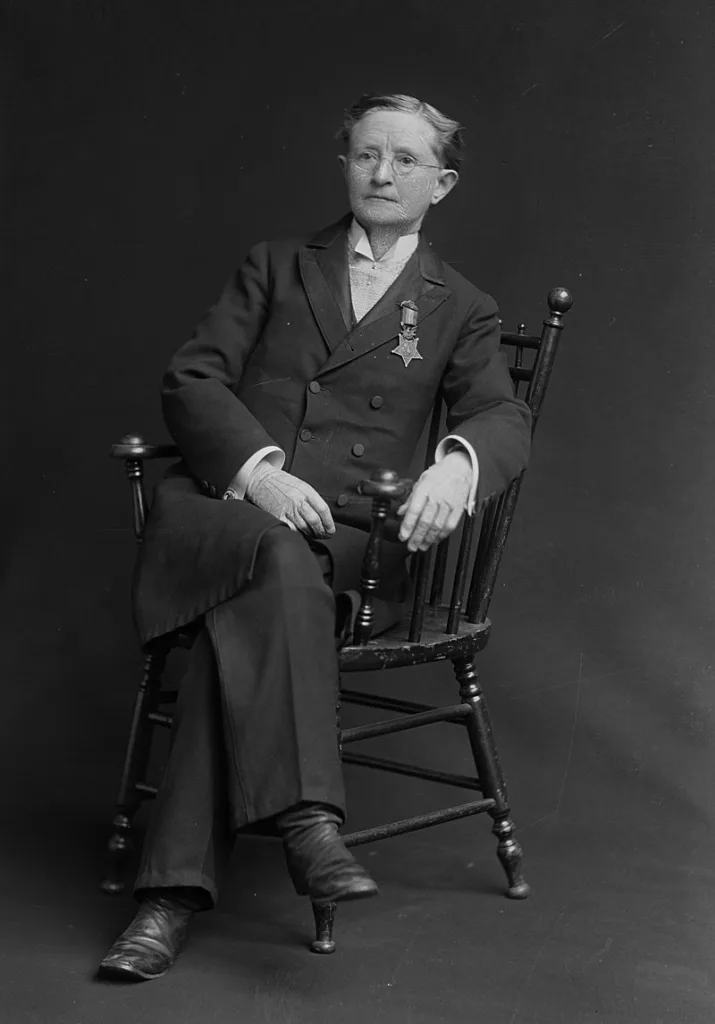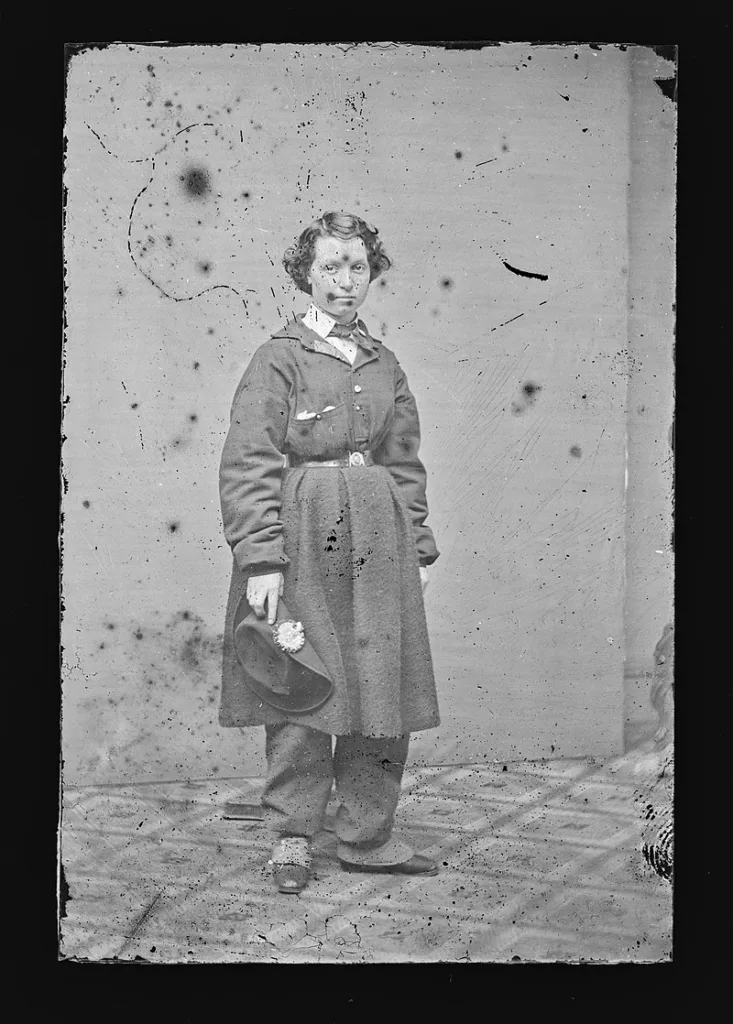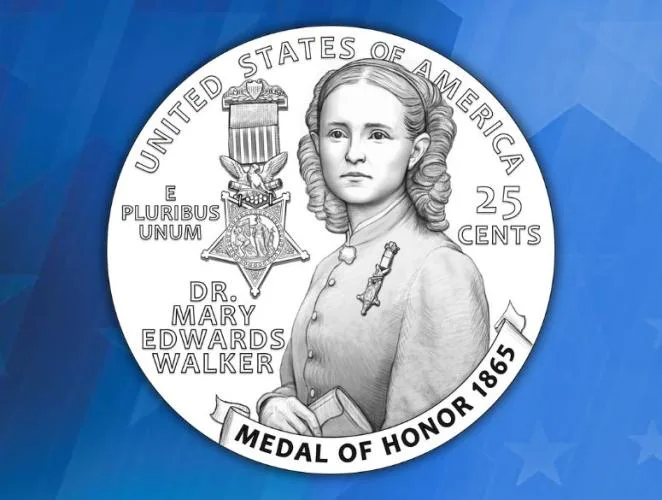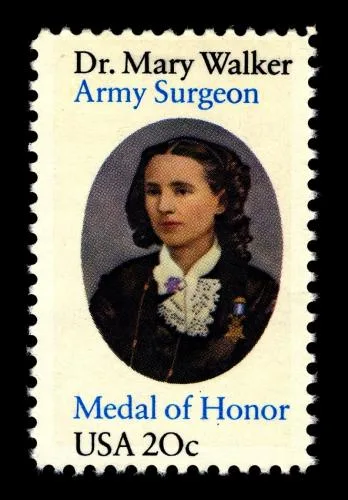Dr. Mary Edwards Walker (1832-1919)
Dr. Mary Walker was an American surgeon, abolitionist, prohibitionist, prisoner of war in the American Civil War, and dress reformer. She is the only woman to ever receive the Congressional Medal of Honor (for her efforts to treat the wounded in battle and across enemy lines) and was the first female surgeon in the US Army. One of only eight civilians to receive the prestigious award, her name was deleted from the Army Medal of Honor Roll in 1917, but restored in 1977. With her eyesight severely damaged during her time as a prisoner of war, Walker could no longer serve as a surgeon, but went on to become a writer and lecturer supporting the women’s suffrage movement until her death in 1919– just one year before the passage of the Nineteenth Amendment to the US Constitution guaranteeing women the right to vote.

A renegade for her time, this pants-wearing suffragette was a force of nature. Walker’s spirit of independence and sense of justice came from her progressive parents, who were Christian Freethinkers who raised their children to question the regulations and restrictions of various denominations. The family farm sheltered freedom seekers on the Underground Railroad. Her parents demonstrated non-traditional gender roles to their children on work around the farm, where Walker did not wear women’s clothing. When the 23-year-old Walker married Albert Miller in 1855, she wore a short skirt with trousers underneath, refused to include “obey” in her vows, and retained her last name. By 1861, her typical ensemble included trousers with suspenders under a knee-length dress with a tight waist and full skirt. An image of an older Walker bearing her Medal of Honor depicts her in short-cropped hair and what could be referred to as a double-breasted “pantsuit.” Later in life, she would occasionally wear a top hat and was once arrested in New Orleans for impersonating a man. Not surprisingly, she was a leader in the dress reform movement known as “rational dress.” Her oft-repeated retort was “I don’t wear men’s clothes, I wear my own clothes.”
An 1855 graduate of Syracuse Medical College and the second female doctor in American history, Walker started a private practice in Rome, NY that was ultimately not successful – due in part to her scandalous separation and divorce from Miller because of his infidelity. (That act would come to stigmatize Walker as “anti-marriage or anti-family,” two highly unacceptable concepts for women at that time.) Hoping that the Army would give her more of an even playing field, she petitioned to join as a surgeon, but her request for an official commission was denied. Determined to aid the Union cause, she volunteered as an assistant surgeon at a makeshift hospital in the US Patent Office in Washington, DC, where she established the Women’s Relief Organization.

By the end of 1862, Walker was accepted as a Union field surgeon, and was later promoted to “Contract Acting Assistant Surgeon (civilian)” and was employed by the 52nd Ohio Regiment, the closest she would come to a formal enlistment. In April 1864 she was captured (accused as a spy, just after helping a Confederate doctor perform an amputation!) and sent to Castle Thunder, a notoriously overcrowded and brutal prison in Richmond, Virginia. Malnourished and with permanent eyesight loss, she was released in exchange for a Confederate surgeon a few months later. She later said that she was delighted in being part of a “man for man” swap. Following the end of her medical career, she briefly served as supervisor of a female prison and head of an orphanage. Awarded a disability pension for partial muscular atrophy suffered while imprisoned, she devoted the rest of her life to advancing her social activism and became a key figure in the suffrage movement.
Honors and Accolades
- 1865– Congressional Medal of Honor awarded by President Andrew Johnson for “valuable service to the Government”
- 1940s – Liberty ship the SS Mary Walker named for her
- 1982 – US Postage 20-cent stamp commemorates anniversary of her birth
- 2000 – Inducted into the National Women’s Hall of Fame
- 2012 –Hometown of Oswego unveils a 900-pound bronze statue in honor of her contributions.
- 2019 – Featured in The Book of Gutsy Women: Favorite Stories of Courage and Resilience by Hillary Rodham Clinton and Chelsea Clinton
- 2019 – Mentioned by former First Lady Michelle Obama in her “Address at the Women in Military Service for American Memorial Center”
- 2023 – Fort A.P. Hill in Virginia officially renamed Fort Walker in her honor, becoming first woman in US history to have a military installation named exclusively named after her
- 2024 – An American quarter is issued in her image, depicting Walker holding her pocket surgical kit and surgeon’s pin on her uniform, part of the American Women Quarters Program
- Featured in numerous books and articles about the role of women in the Civil War, military heroes, and the fight for women’s rights

Links:
https://www.womenshistory.org/education-resources/biographies/mary-edwards-walker
https://womenshistory.si.edu/blog/dr-mary-edwards-walker-recognized-new-us-quarter
https://www.army.mil/article/183800/meet_dr_mary_walker_the_only_female_medal_of_honor_recipient

